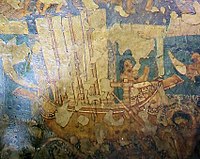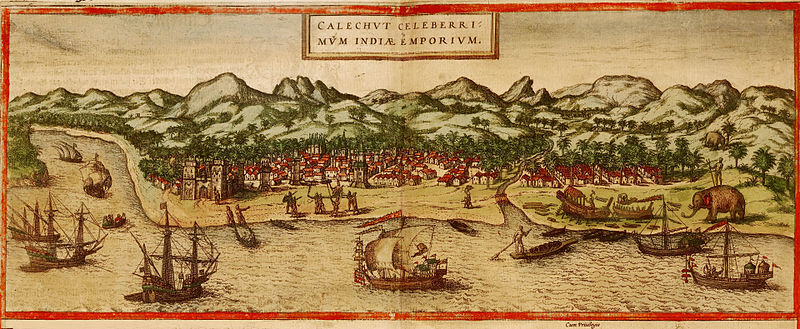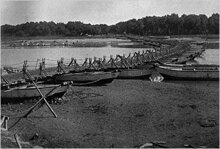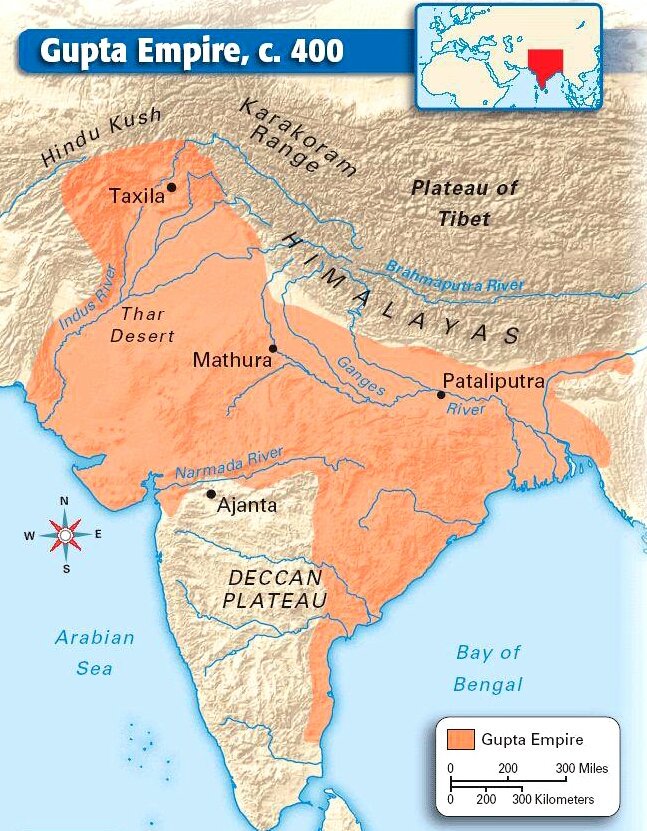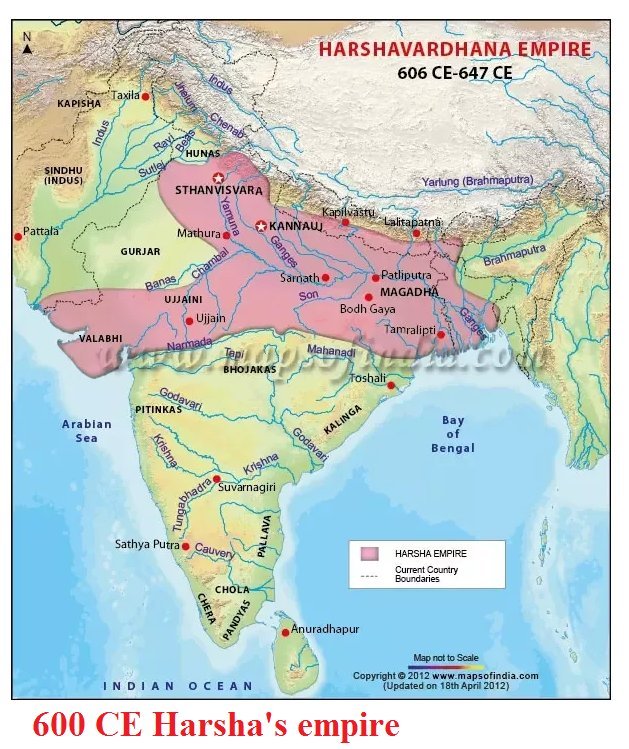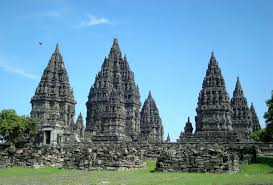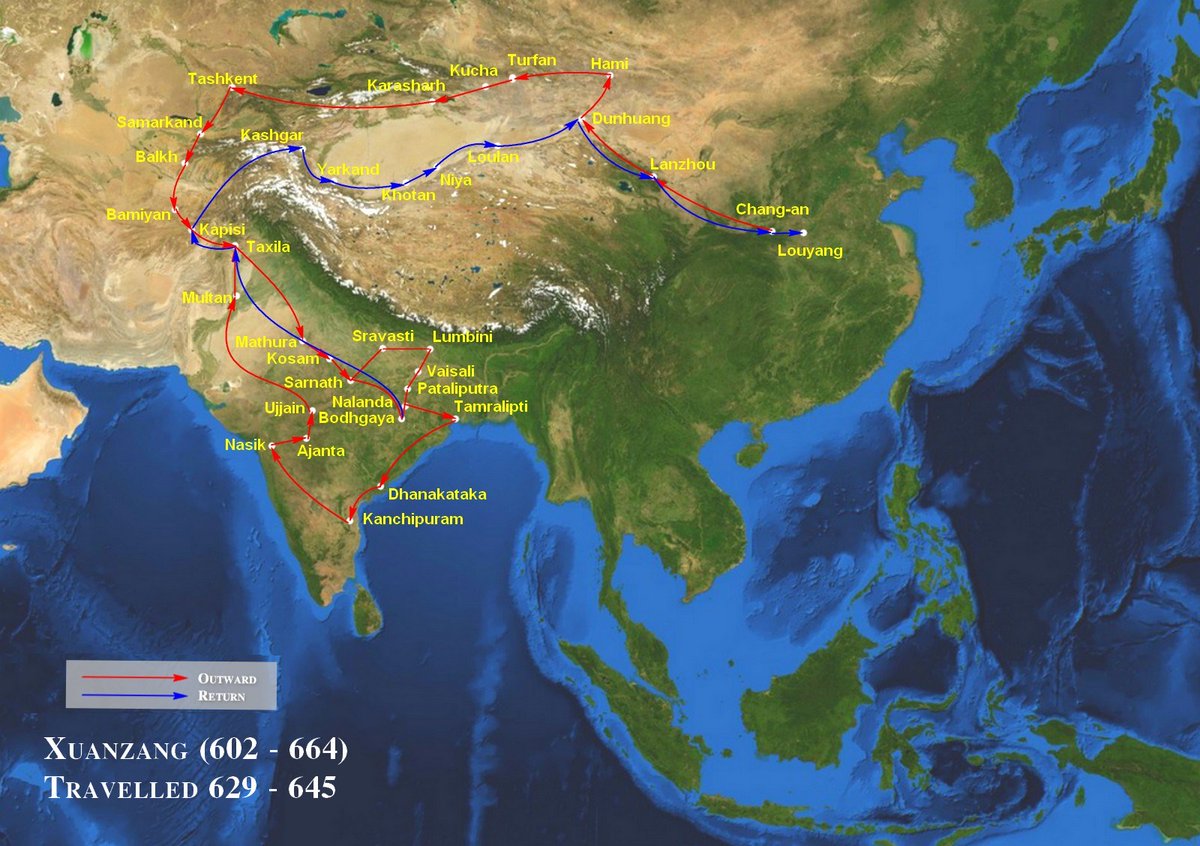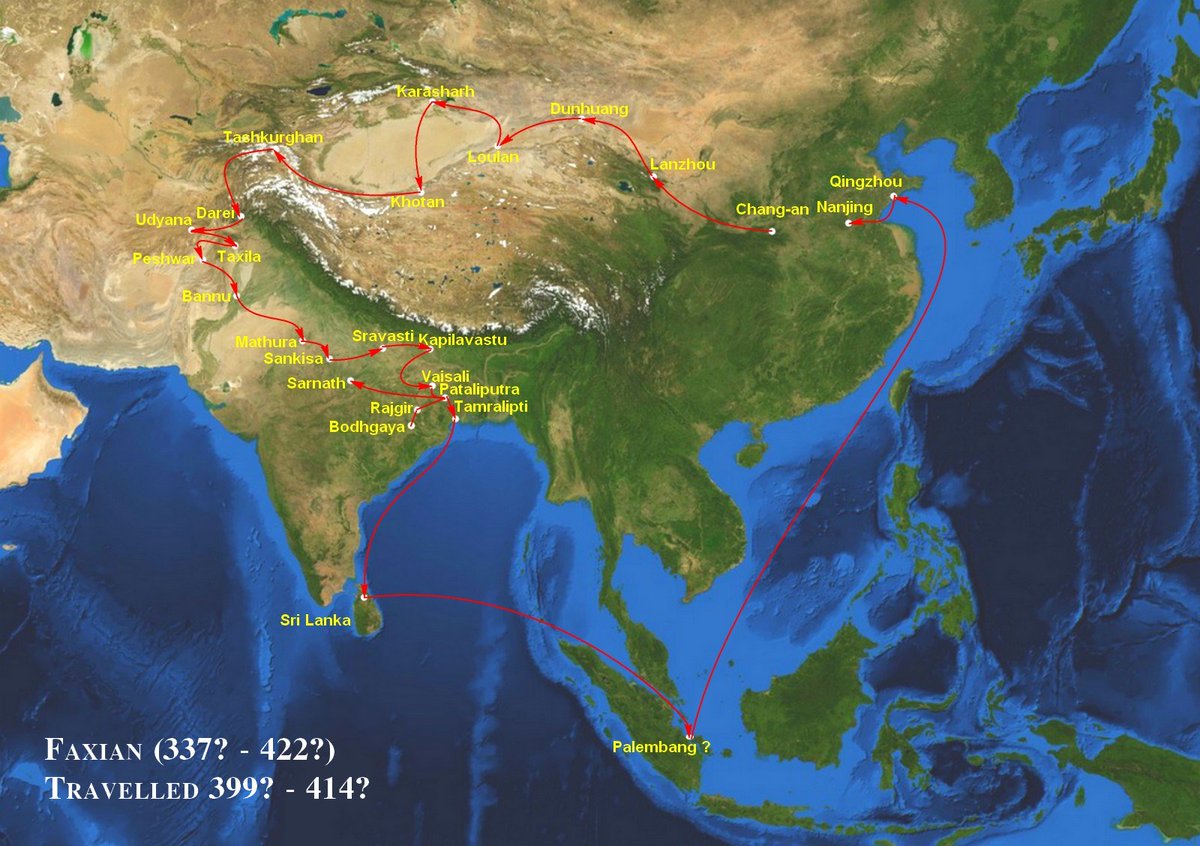Chapter 7 : Naval Warfare in Ancient India
This chapter will discuss the history of naval warfare in Ancient India.
Image of an Ancient Indian ship on lead coin of Vasisthiputra Sri Pulamavi, Satavahana Empire, during the 1st–2nd century AD.
This chapter will discuss the history of naval warfare in Ancient India.
Image of an Ancient Indian ship on lead coin of Vasisthiputra Sri Pulamavi, Satavahana Empire, during the 1st–2nd century AD.
The old colonial notion that the Hindus were essentially a land - based people lacking in spirit and adventure and the heart to face the ocean waves has now been dispelled.
The researches of a generation or more of scholars have proved that Indians from very early times were distinguished by naval skill & enterprise, that they went out on trading voyages across the seas and even established colonies & trading posts on numerous lands & islands.
Indus Valley people were the first in this regard, where they used to trade with ancient lands like those of Iraq, Oman, Bahrain (Dilmun), etc.
The Rig Veda knows about sea faring and credits Varuna as the God of Seas.
Image of a painting from Ajanta, of a three-mast ship.
The Rig Veda knows about sea faring and credits Varuna as the God of Seas.
Image of a painting from Ajanta, of a three-mast ship.
The actual instances of the use of Navy as a part of military machine are not altogether lacking.
The earliest known written material - Arthashastra of Kautilya provides us with valuable information regarding naval capabilities of Ancient Indians.
Painting of an Indian Ship.
The earliest known written material - Arthashastra of Kautilya provides us with valuable information regarding naval capabilities of Ancient Indians.
Painting of an Indian Ship.
Admiralty : Superintendent of Shipping ( Navadhyaksha) :
There was a Board of Admiralty which, according to Megasthenes, was a department of War - Office of Chandragupta Maurya.
There was a Board of Admiralty which, according to Megasthenes, was a department of War - Office of Chandragupta Maurya.
According to Kautilya, the Admiralty was the portfolio of an officer called & #39; Navadhyaksha& #39; or Superintendent of Ships & boats who had to deal with all matters relating to war.
Painting of a panorama of Calicut Port ,1572, showing many types of boats.
Painting of a panorama of Calicut Port ,1572, showing many types of boats.
The use of vessels in war first shows itself in the campaigns f Alexander who effected his passage across the Indus, with help of Raja Ambhi of Taxila, and the Hydaspes by a bridge of boats.
Image of a pontoon bridge on Ravi river, Punjab , 1945.
Image of a pontoon bridge on Ravi river, Punjab , 1945.
Arrian describes the construction of dock yards & the contribution of galleys of 30 oars & of transport vessels by the tribe called Xathroi.
The construction of ships was a State monopoly but the ships were let out on hire. This is confirmed by Kautilya ( Book 2, Chpt 28 ).
The construction of ships was a State monopoly but the ships were let out on hire. This is confirmed by Kautilya ( Book 2, Chpt 28 ).
It was the duty of the Admiralty to pursue & destroy piratical boats, ships ( himsrikah) as well as those from an enemy& #39;s country ( amitravishayatigah).
The Admiralty in fact policed the rivers & sea-shore. They had also to collect all tolls levied at ferries, harbour dues, etc
The Admiralty in fact policed the rivers & sea-shore. They had also to collect all tolls levied at ferries, harbour dues, etc
The Admiralty, however, was bound to offer free passage to " men who were engaged to carry provisions & orders to the army. "
Thus, boats were needed not so much for actual fighting as for the purposes of transport of arms & provisons for the army along water - ways.
Thus, boats were needed not so much for actual fighting as for the purposes of transport of arms & provisons for the army along water - ways.
Sea - borne Trade :
There is some evidence of sea-borne trade.
One hears of Prince Mahajanaka sailing from Champa for Suvarnabhumi , of Mahendra from Pataliputra to Tamralipti and thence to Lanka.
Mahendra was the eldest son of Ashoka.
There is some evidence of sea-borne trade.
One hears of Prince Mahajanaka sailing from Champa for Suvarnabhumi , of Mahendra from Pataliputra to Tamralipti and thence to Lanka.
Mahendra was the eldest son of Ashoka.
A whole villagers of defaulting woodwrights is described as escaping down the Ganges in a " mighty ship" from Benares out to the sea ( Jatakas, Book IV, 159)
An accomplished helmsman brings safe by ships " passengers for India, from far off destinations."
An accomplished helmsman brings safe by ships " passengers for India, from far off destinations."
One reads of traders, going beyond the western ports " out of sight of land" into the ocean & trading with Baveru ( Babylon).
A map of Ancient India Sea trade routes.
A map of Ancient India Sea trade routes.
We also read of traders going around India from Bharruch (in Gujarat) to Suvarnabhumi & touching with Lanka in the way
The cargo of a newly-arrived ship attracts hundred merchants to buy it up. The ships of the times were large enough to accommodate " hundreds of passengers. "
The cargo of a newly-arrived ship attracts hundred merchants to buy it up. The ships of the times were large enough to accommodate " hundreds of passengers. "
We read of 500 souls on board ill-fated ships and of 700 under the safe passage of Supparaka.
The sea-borne trade of India and her colonizing activities showed an increase during the Gupta period and during the & #39;age of Harsha& #39;.
Images of Gupta and Harsha& #39;s Empire, respectively.
Images of Gupta and Harsha& #39;s Empire, respectively.
The Javanese Chronicles refer to a great emigration of about 5,000 Indians from west coast of India to Java, in 603 AD in 6 large and 100 small vessels followed by another contingent of 2,000 emigrants who were craftsmen.
To these craftsmen from India , mankind owes the great temples of Borobundur & Prambanam in Indonesia, which are some of the best examples of Indian art.
Images of Borobundur & Prambanam temples, respectively.
Images of Borobundur & Prambanam temples, respectively.
It is inferred that these immigrants from the ports of Gujarat might be Sakas, whose powers had collapsed under the conquest of Chandra Gupta Vikramaditya & also by Huns, whose defeats by the Sassanians between 550-600 AD, intercepted their retreat northwards.
Then there were also the conquests of Prabhakarvardhana ( father of Harsha), who had defeated the Huns, Gurjaras, the Latas, Kings of Gandhara, Sindh and Malwa, followed by further conquests by Harsha.
This, drove swarms of refugees towards the western coast, anxious to escape from a land of disturbance & confusion into fresh fields and greener pastures.
Thus, these migrations opened fully the sea routes to the east, the approaches to new fields of commerce & colonization.
Thus, these migrations opened fully the sea routes to the east, the approaches to new fields of commerce & colonization.
There was a brisk export of both goods and ideas from India to these distant countries beyond her borders, which figures as so many outposts of Indian culture.
The chief of these was the island of Sumatra, then known as & #39;Sribhoja& #39;.
The chief of these was the island of Sumatra, then known as & #39;Sribhoja& #39;.
A Chinese traveller named Yijing or I-tsing who came to India around 690 AD, studied both Sanskrit and Pali at Sumatra for many years.
Java called & #39; Javadi& #39; by Fa-Hien, was called & #39;Kalinga& #39; in I-tsing& #39;s time. Brahmanism was first established here and then Buddhism.
Java called & #39; Javadi& #39; by Fa-Hien, was called & #39;Kalinga& #39; in I-tsing& #39;s time. Brahmanism was first established here and then Buddhism.
It must be noted that foreigners who came to India from 1st century AD to at least 9th century, went back via sea-route.
Exception was Xuanzang, who walked all the way from China to India and went back by same route.
Image of Xuanzang& #39;s travels.
Exception was Xuanzang, who walked all the way from China to India and went back by same route.
Image of Xuanzang& #39;s travels.

 Read on Twitter
Read on Twitter
